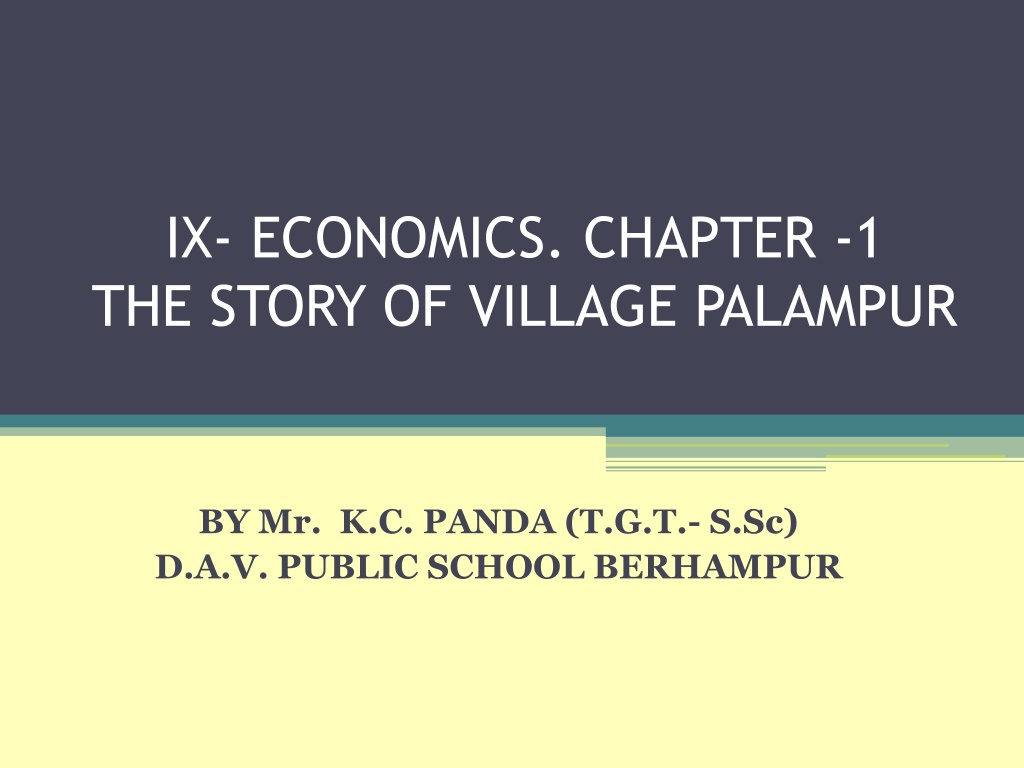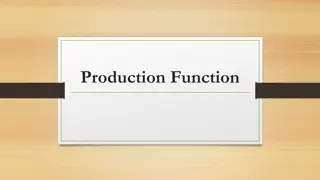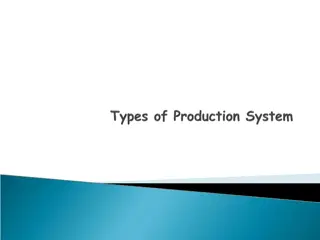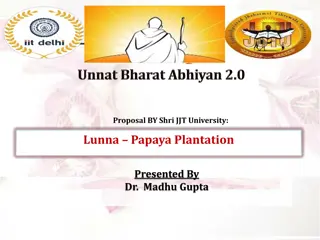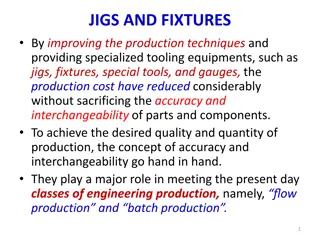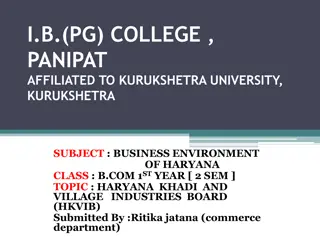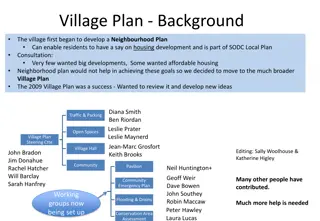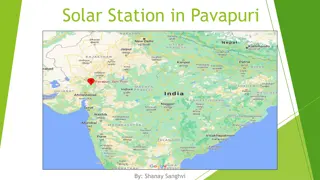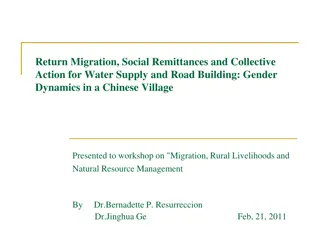The Story of Village Palampur - Basic Concepts of Production
The story of a hypothetical village, Palampur, introduces basic production concepts and factors like land, labor, and capital with a focus on agriculture and other activities. Explore Palampur's facilities, organization of production, and farming practices.
Download Presentation

Please find below an Image/Link to download the presentation.
The content on the website is provided AS IS for your information and personal use only. It may not be sold, licensed, or shared on other websites without obtaining consent from the author. Download presentation by click this link. If you encounter any issues during the download, it is possible that the publisher has removed the file from their server.
E N D
Presentation Transcript
IX- ECONOMICS. CHAPTER -1 THE STORY OF VILLAGE PALAMPUR BY Mr. K.C. PANDA (T.G.T.- S.Sc) D.A.V. PUBLIC SCHOOL BERHAMPUR
THE STORY OF VILLAGE PALAMPUR CONCEPT MAP
THE STORY OF VILLAGE PALAMPUR BASIC PURPOSE OF THE CHAPTER To introduce the basic concepts relating to production through a story of a hypothetical village called Palampur. Like any other Indian village main production activity Agriculture/Farming Other activities Non farm activities : Small- scale manufacturing, Dairy, transportation, shop keeeping etc.
Facilities available in Palampur Well connected roads with nearby village and town(Raigang & Shahpur respectively) Availability of Transport system like bullock carts, tongas, bogeys ,motorcycles, jeeps, tractors and trucks. Availability of electricity, irrigation(electric run tube wells) schools(two primary schools and one high school) & health centres(one primary health centre & one private dispensary)
Organisation of Production- Factors Main aim of Production To produce the goods and services that we want. Factors responsible: Land (It includes other Natural resources such water, forests, minerals) Labour: People who will do the work
Organisation of Production- Factors Physical Capital The variety of inputs required at every stage during production i)Fixed Capital Tools, machines, buildings etc. ii) Working Capital : Raw materials and money in hand. Human Capital : Knowledge and enterprise to use land, labour, physical capital to maximise production.
Activity- In the given picture Identify the land, labour & fixed capital used in production
Farming in Palampur Some facts Land- Fixed. Total families 450. ( Upper caste owns majority of lands, 150 dalits having no land, 240 families have small plots less than 2 hectares (standard unit of measuring land)
Ways to grow more than one crop from the same piece of land in a year Multiple cropping- Growing of three different crops in a year in Palampur due to the well-developed system of irrigation Rainy season (kharif) Farmers grow jower & bajra, Oct. & Dec. potato Winter season(rabi)-Wheat Apart from all these farmers in Palampur also grow sugar cane once in a year.
Ways to grow more than one crop from the same piece of land in a year Use of Modern farming methods: Use of better fertilizers, pesticides, manures, high- yielding variety of seeds, modern farm machineries like tractors, thrashers, harvesters, better irrigation and many more. All these inputs gave birth to Green Revolution in India.
Green Revolution Father- M.S. Swaminathan in India (Norman Borlaug of USA in the World) It led to spectacular increase in the production of food grains namely wheat and rice using Modern Farming Methods. States benefitted- Punjab, Haryana,& Western Utter Pradesh
Demerits of Green Revolution Increased use of Chemical fertilizers- loss of soil fertility, pollutes ground water, kills useful bacteria of the soil Continuous use of ground water for tube-well irrigation - Reduction of the water table below the ground.
HOME WORK - DAY 1 Q.1. Name the factors of production? Q.2. Define Physical Capital? Q.3. Human Capital is essential for production of goods and services . Give one reason? Q.4. Define Multiple Cropping ? Q.5. What do you mean by Modern Farming Method ? Q.6. Define Yield ?
HOME WORK - DAY 2 Q.7. Name the Non-farm activities carried out in the village Palampur ? Q.8. What is Fixed Capital ? Q.9. Define Working Capital? Q.10. Why are the wages for farm labourers in Palampur less than the minimum wages ? Q.11. What is the standard unit to measure cultivable land ? Q.12. Define Green Revolution ? Q.13. Which is a scarce factor of production ?
Labourers in Palampur Labourers in Palampur either from land-less families or families cultivating small plots of land. Works on daily wages Poor Reasons Heavy competition for work So, agree to work for lower wages.
Capital needed for faming in Palampur Most small farmers- Borrow from large farmers, village money lenders or traders Medium & Large farmers from their own savings from farming.
Non-Farm Activities in Palampur Dairy Small-scale manufacturing carried mostly at home or in the fields with the help of family labour The Shopkeepers of Palampur Transportation
HOME WORK - DAY 3 Q.1. Which is the abundant factor of production ? Q.2. How do small farmers obtain their capital for farming in Palampur ? Q.3. How do medium and large farmers obtain their capital for farming in Palampur ? Q.4. State one benefit of electricity for the people of Palampur ? Q.5. How many families do live in the villagePalampur ? Q.6. Palampur resembles a modern village Give one evidence ?
HOME WORK - DAY 4 The distribution of land in Palampur is unequal Justify. (3) Modern Farming Methods require more inputs which are manufactured in industry . Give your comment. (3) How do the farmers arrange their capital in Palampur?(3) What are the different ways of increasing production on the same piece of land ? Use examples to explain. (3)
HOME WORK - DAY 5 Distinguish between Multiple Cropping and Modern Farming Methods. (5) Write the merits and demerits of Green Revolution. (5) What are Non-farm activities? Give any four examples. Suggest any three measures so that more non-farm activities can be started in villages.(5)
